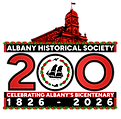Home / Historic Albany / Albany Grand Hotels
Albany's Grand Hotels
It was the golden era of hotels, evolving from humble private residences and small inns to splendid and magnificent establishments.
Since its earliest days, Albany has offered first class accommodation for visitors, reflecting the town’s welcoming spirit and its growing importance as a port and settlement. The first hotel, the Commercial Tavern, was established in the mid-1830s by Diggory Geake on Albany Town Lot B40. This two storey brick building featured ten rooms and by the end of 1837, Albany boasted the luxury of four hotels, including the Ship Inn on Town Lot B15, Sherratt’s Family Hotel on Town Lot B28, and the Albany Hotel all becoming key social hubs and landmarks that shaped the town’s character while welcoming visitors from across the region.
As Albany grew, grand hotels emerged, designed to provide an unparalleled experience of comfort and luxury for guests who often stayed for weeks or even months. These opulent establishments featured spacious balconies with breathtaking views, allowing visitors to fully enjoy the town’s natural beauty. Inside, every detail was carefully considered for maximum comfort. Inviting lobbies exuded warmth and sophistication, while lounges, reading rooms, and writing areas served as tranquil retreats. Furnished with rich, luxurious pieces and adorned with elegant, intricate decorations, each space was a testament to the refinement and grandeur that defined Albany’s hospitality, ensuring every stay was both memorable and indulgent.









